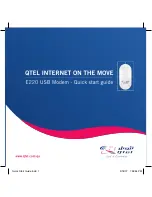
PACKET
14
people use the Unproto Mode and are aware that a collision may occur once in a while. You can
usually tell by the conversation if something was missed; if you don't get an answer to a question
it's probably not that he is ignoring you, but either the question or the answer got collided with.
With MONITOR ON, the BUDLIST and BUDCALLS commands can help in setting up your monitor-
ing to see only those you want to see. List up to 10 calls in BUDCALLS and set BUDLIST to BOTH.
Now you will only see packets "to" and "from" those calls. If you like, you may each want to con-
nect to one person, then you know at least that one got what was said, but be sure MCON and
MALL are ON.
Timing
Dwait vs. Persistence and Slottime
When the TNC acts as a digipeater, packets that need to be relayed are retransmitted as soon as
the frequency is clear. Because of the end-to-end acknowledgment of these kinds of packets it is
best for an originating station to avoid colliding with digipeated packets. The TNC provides two
ways to accomplish this delay. These two methods are the standard DWAIT method or the newer
PERSISTENCE/SLOTTIME algorithm. During a connect using no digis, this delay also gives the re-
ceiving station time to switch from transmit to receive.
Using the DWAIT method, once the TNC detects a clear frequency, it will wait DWAIT (times 10
milliseconds) time before beginning to keyup the radio to transmit a packet. This is a packet origi-
nated by you not a digipeated packet.
The algorithm used with the PERSIST and SLOTTIME parameters helps avoid collisions by random-
izing the wait time before transmitting. The more random the timing the less chance of two TNCs
transmitting at the same time and colliding. Once the TNC detects a clear frequency it will wait
SLOTTIME (times 10 milliseconds). Then it will generate a random number. If this number is smal–
ler than the setting of PERSIST the TNC will transmit. If it is larger, it will wait another SLOTTIME
an generate another random number and again decide whether to transmit or not. When using
PERSIST and SLOTTIME you should set DWAIT to 0, since both will be used if specified.
As an example, let's assume that PERSIST is set to 63 and SLOTTIME is set to 10. This value of
SLOTTIME results in a random number being generated every 100 milliseconds. When the TNC
sees that the channel is clear, it waits 100 ms, then generates a random number between 0 and
255 (inclusive). In our example, the number was 83, then the TNC would not start the keyup of
the transmitter since 83 is greater than the 63 PERSIST value. Instead, it would wait an additional
100 ms, and if the channel is still clear, generate a new random number. This time, let's say it
comes up with the number 27. Since this is less than the PERSIST value, we now start the keyup
of the transmitter to send the packet.
Txdelay
TXDELAY should be adjusted to allow your radio sufficient time to switch from the receive mode to
transmit and develop full power output. If the TNC sends the packet before the radio is at full
power, the beginning of the packet will be lost and no one will be able to decode it. It is a good
idea to allow a little extra time for this parameter to allow the station you are talking to sufficient
time to switch from his transmit mode back to receive. This is not usually necessary if you are con-
nected through a digipeater, but if you are connected direct, this could make the difference be-
tween successful communications and no communications. The TNC sends flags during this period,
so if someone has this set extra long you will hear a repetitive sound at the beginning of the
packet.
















































